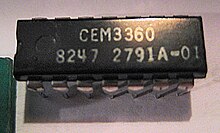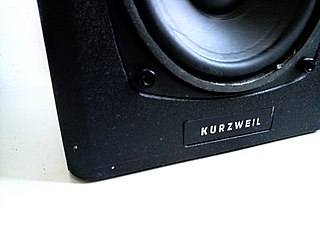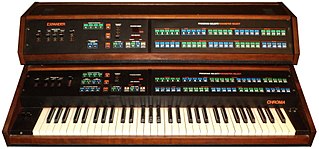Features
Structured/Adaptive Synthesis
Roland's structured adaptive synthesis (SAS) has been described as a "...sophisticated re-synthesis technique which involves a highly accurate computer analysis of 'real' sounds, from which a near replica can be synthesised." [1] Roland engineers created samples of each of the 88 keys of various grand pianos, played at 128 different velocities (i.e. everything from very soft to very loud), and then did analysis of the waveform changes. The resulting algorithm of harmonic/velocity sound relationships was put on a VLSI chip. [2]
Roland released the SAS system in Autumn 1986 with several different products, including: [2]
- MKS-20 rack unit
- RD-1000 stage piano
- HP-5500/5600 home digital pianos
MKS-20 rack unit
The MKS-20 has 16-voice polyphony, which means that 16 keys can be pressed at the same time. It has eight presets for piano and other keyboard instruments (electric piano, harpsichord, vibraphone, clavinet), with 56 variations. The first two piano sounds have been likened to a German grand piano sound; the third has been called similar to a Yamaha CP-70 or CP80's piano sound. [1] The unit responds to velocity (hard or soft playing) when a MIDI controller keyboard that outputs velocity data is connected to it. The MKS-20 has a "voice preserve" feature which can be turned on or off. When voice preserve is on, the player can play a note or chord, and then while holding the notes down on the keyboard, switch to a new synth voice. Even though a new synth voice was selected, the original voice is sustained as long as the player holds down the original note or chord. Subsequent notes or chords use the newly selected voice.
It has three onboard effects units: stereo chorus effect with adjustable rate and depth, stereo tremolo with adjustable rate and depth, and equalizer. The three-band equalizer has bass (100 Hz) and treble (10 kHz) shelving controls and a parametric midrange control. The front panel has sliders, buttons, an alpha-dial for changing settings, a headphone jack, a port for plugging in a M-16C memory cartridge, and a MIDI message light, which flashes when the unit is sending it receiving MIDI messages. The back has 5-pin MIDI "in" and "out" ports for connecting to a MIDI controller or to other MIDI gear (e.g., a music sequencer) and stereo 1/4" (600 ohm) and XLR outputs for plugging into a keyboard amplifier, PA system, or recording system.
The back also has a three-position output level switch which only affects the unbalanced 1/4 outputs. The high level output is for recording applications. The low or medium level are for guitar amplifiers. The medium or high level are for keyboard amplifiers. When connecting the unit to an audio mixer, either three of the level settings can be used. It weighs 8 kg (17 lb 10 oz) and uses the standard 19" rack size. [3] The MKS-20 uses CEM3360 dual voltage controlled amplifier (VCA) integrated circuit chips. Inside the unit, there is a battery to power the memory unit. The battery needs to be replaced every five years by a qualified repair technician.

RD-1000 keyboard
The RD-1000 has the same electronics and sound features as the MKS-20 mounted in an 88-note weighted MIDI controller keyboard, along with a keyboard stand and a floor unit to house the sustain pedal and a soft pedal. [1] The keyboard alone is 95 pounds; the floor pedal unit is 18 pounds, and the heavy duty stand is another 29 to 39 pounds, depending on which stand is used. The settings offer keyboard touch response changes, which are called A, B, C and D. B is the default value, under which the shift in dynamics and harmonic structure increases in a linear way with the amount of velocity applied to a key. With setting A, there is a more subtle increase in volume and less change of timbre. With the settings C and D, the changes are more dramatic. [2]
Rhodes MK80
Following Roland's acquisition of the Rhodes brand in 1987, the company released the Rhodes MK80 in 1989. This instrument was derived from the MKS20/RD-1000 architecture but with a large emphasis on its Rhodes emulation patches. Harold Rhodes himself was disparaging of the instrument which was released without his approval (who had lost the rights to his own trademark) and therefore the MK80 is not considered part of the classic canon of Rhodes pianos. Roland went on to release several digital pianos and synthesisers under the Rhodes brand.
















